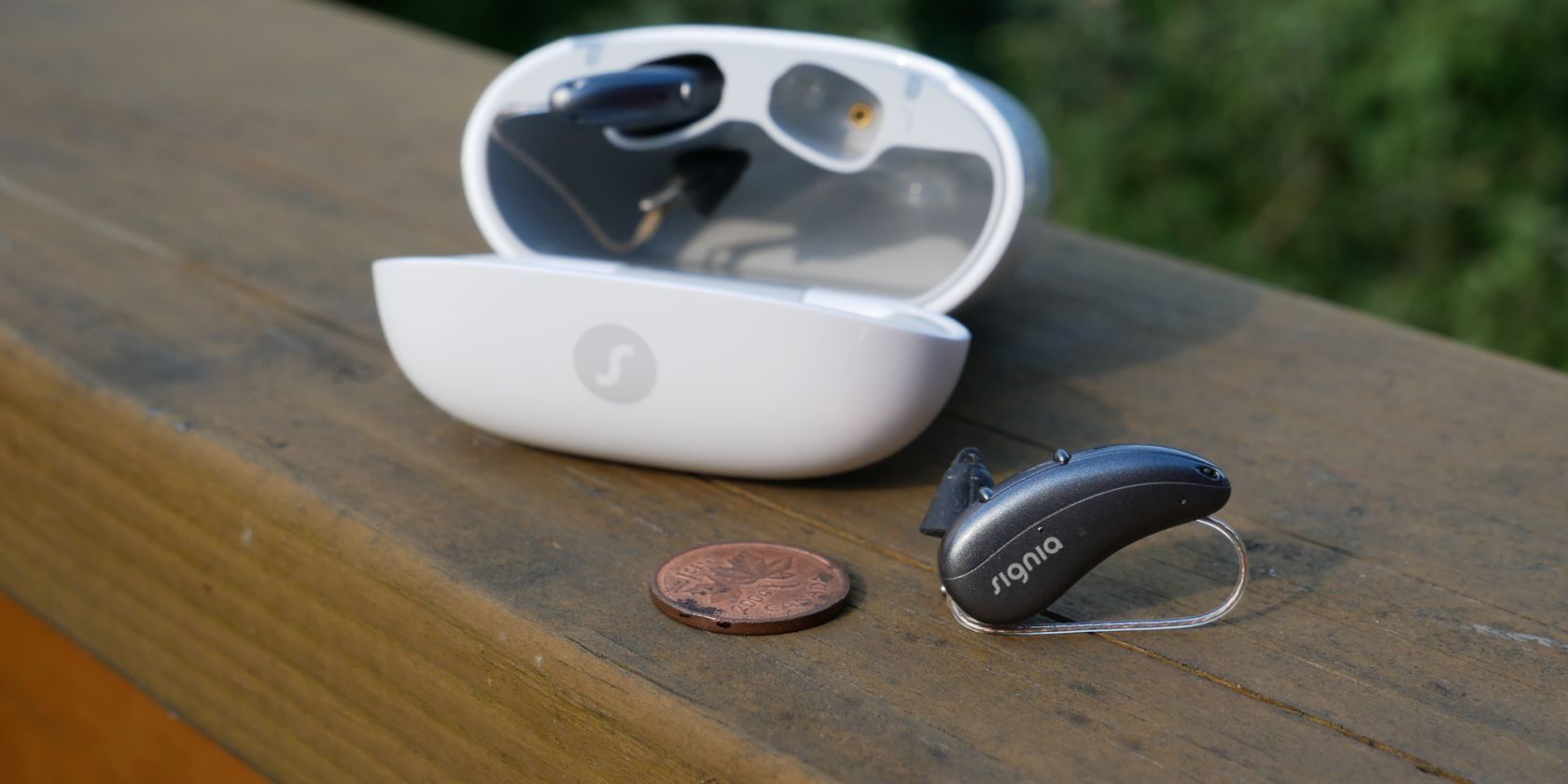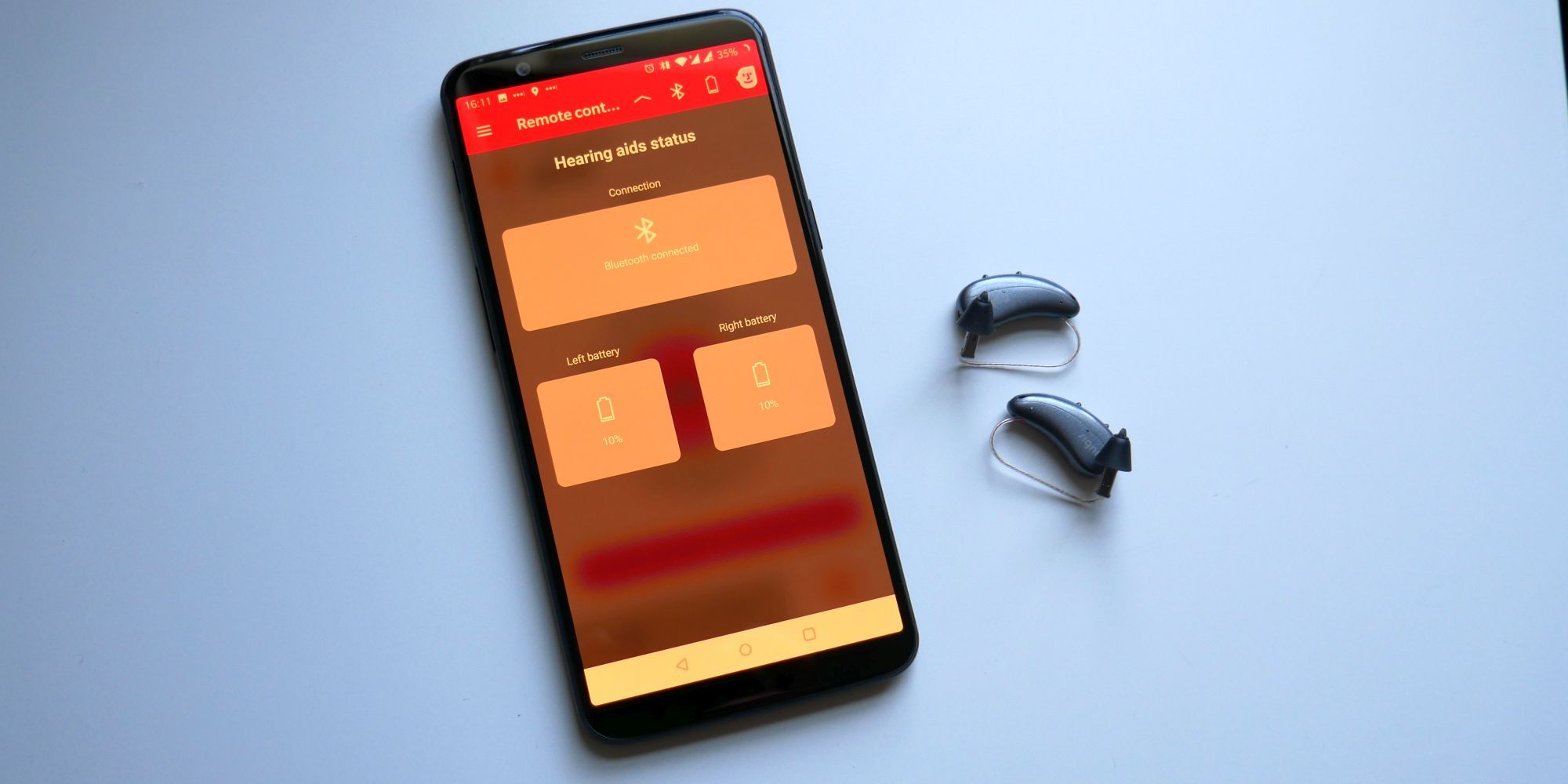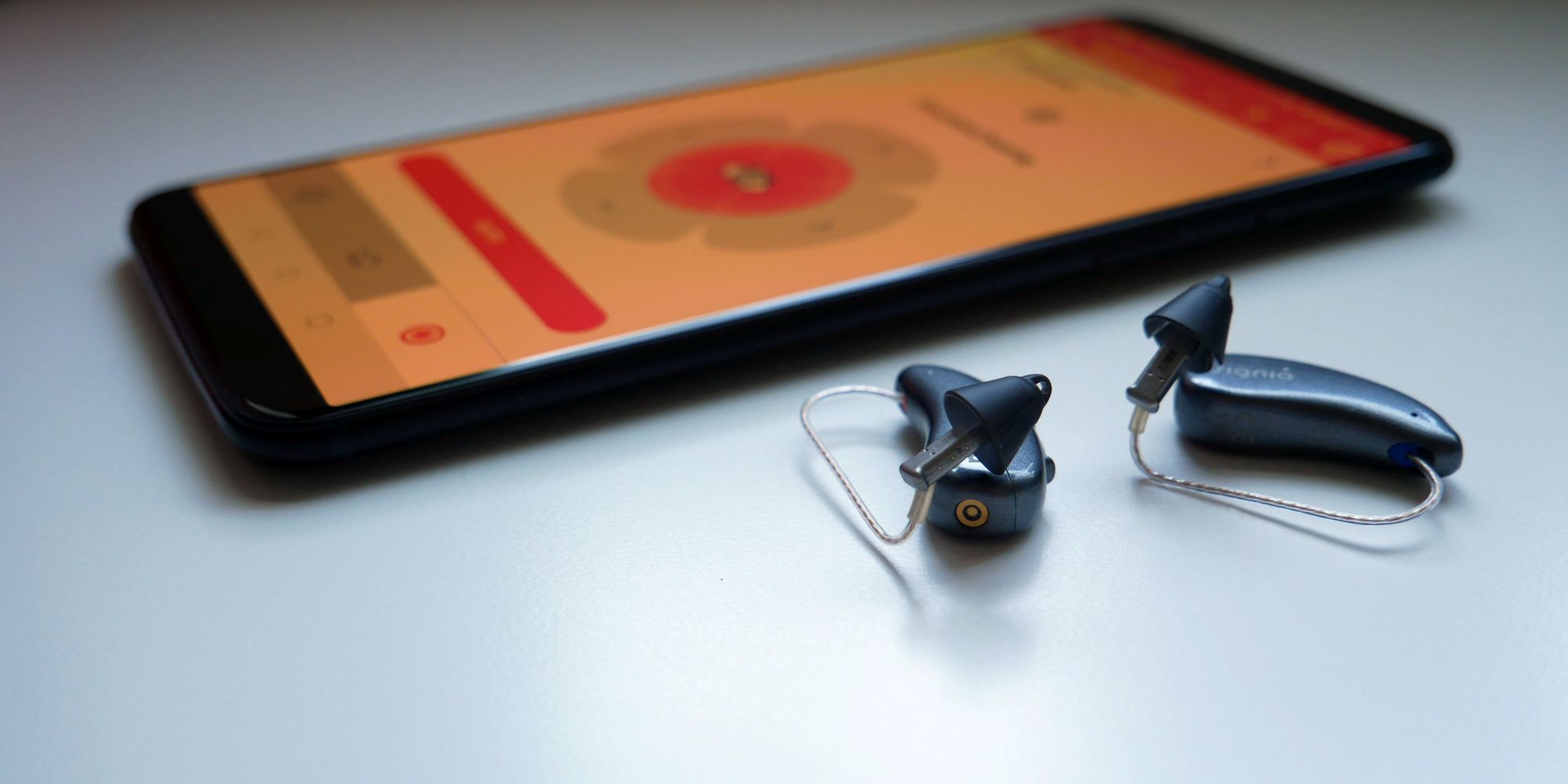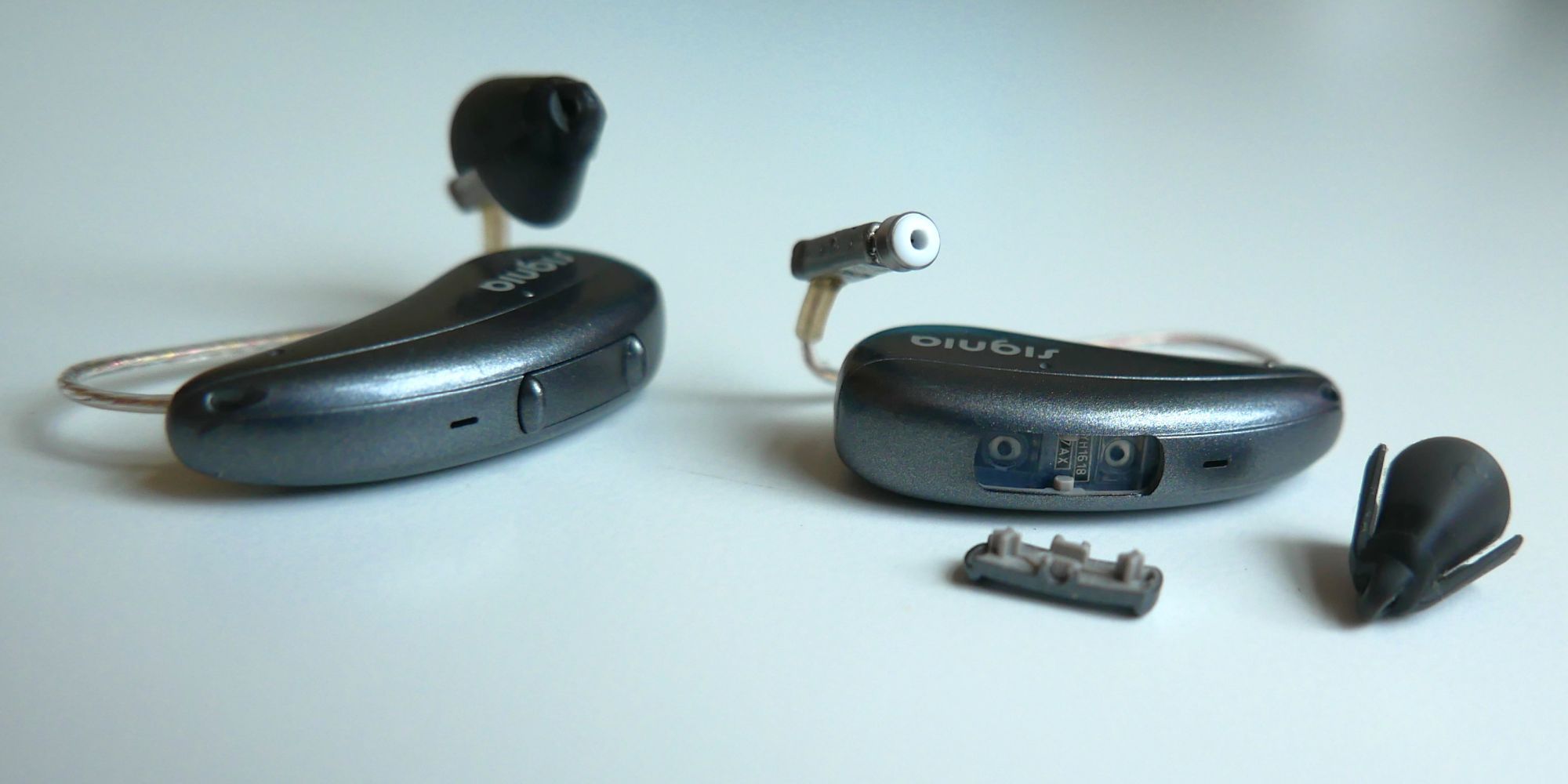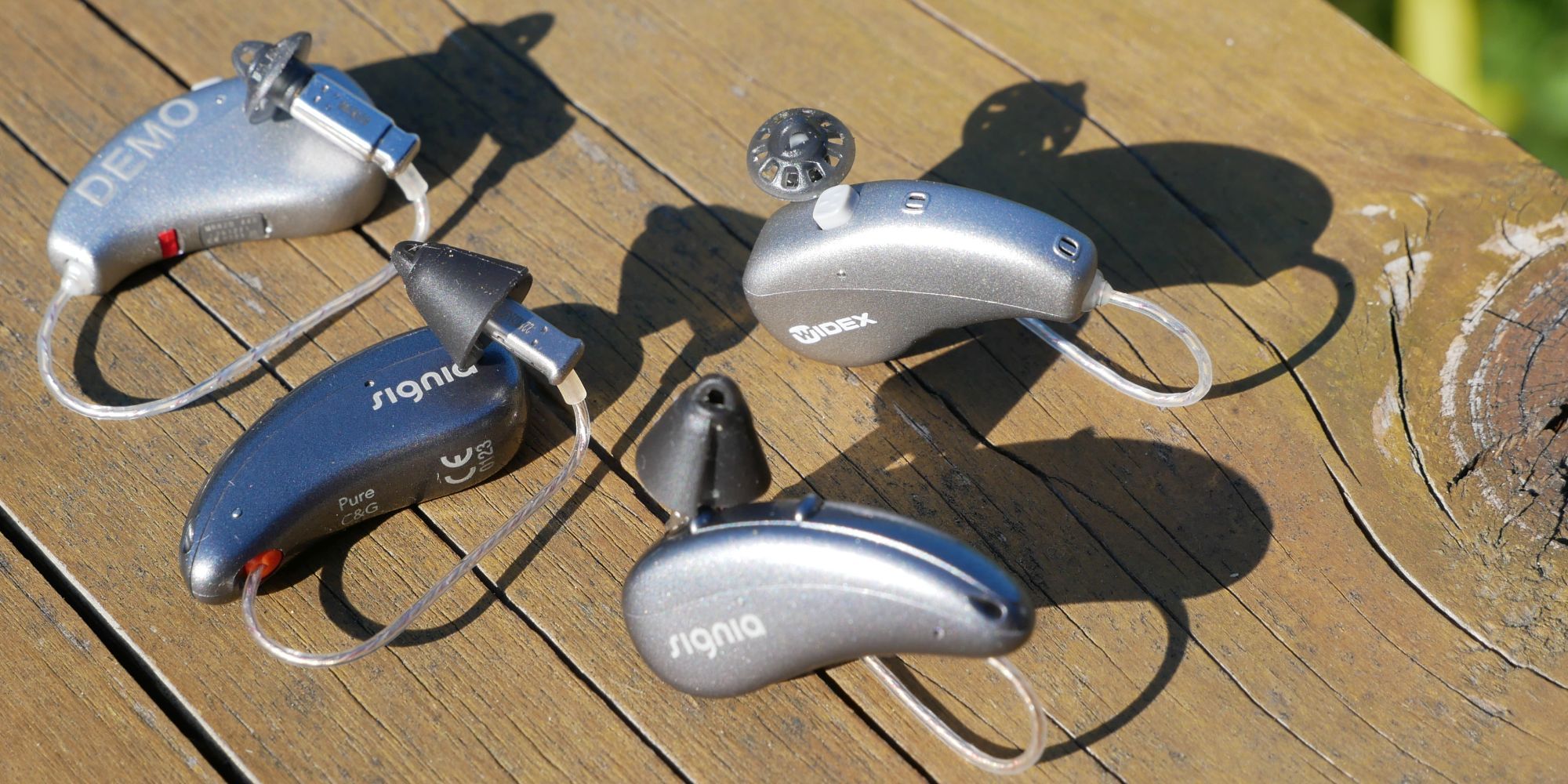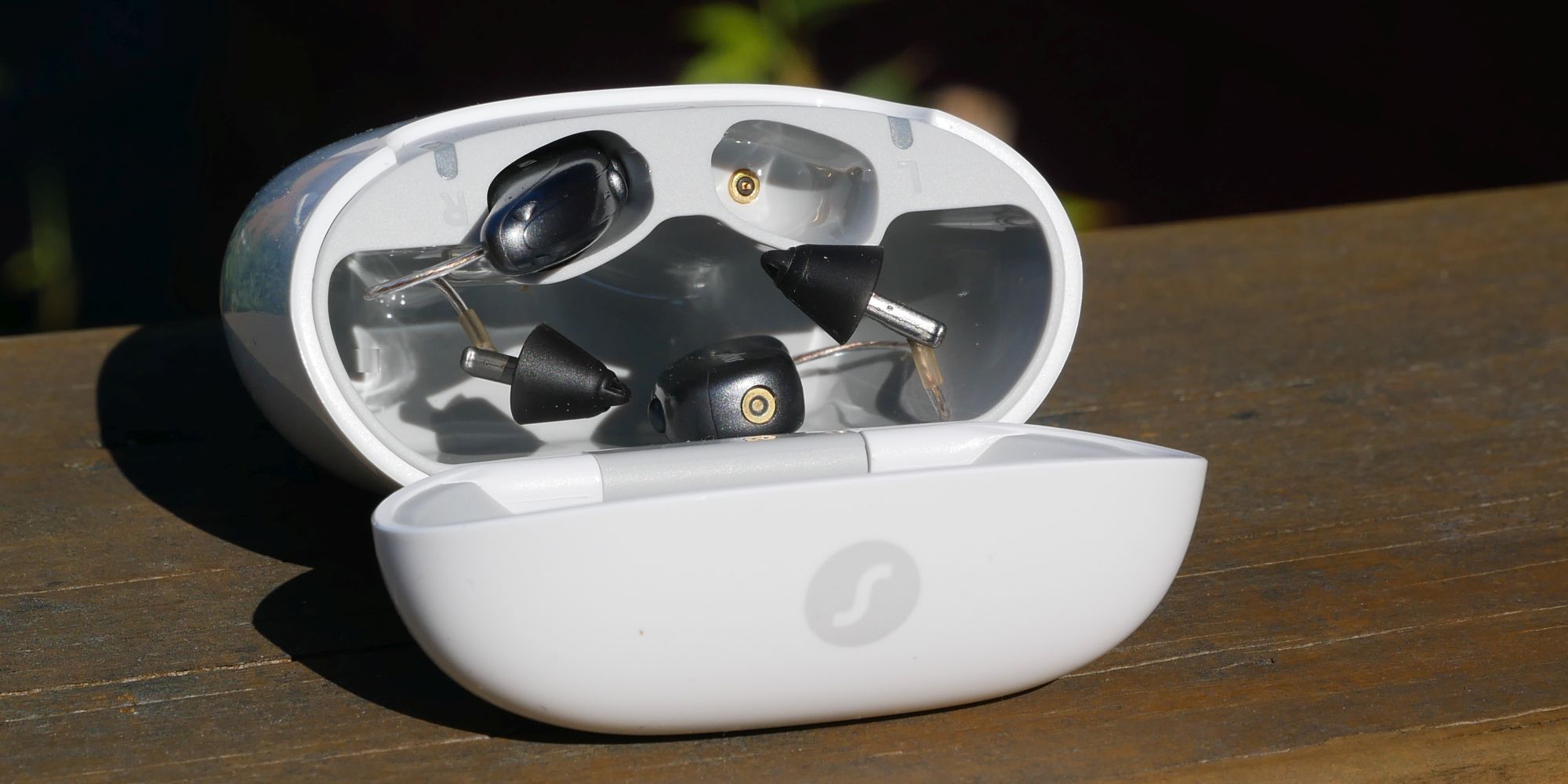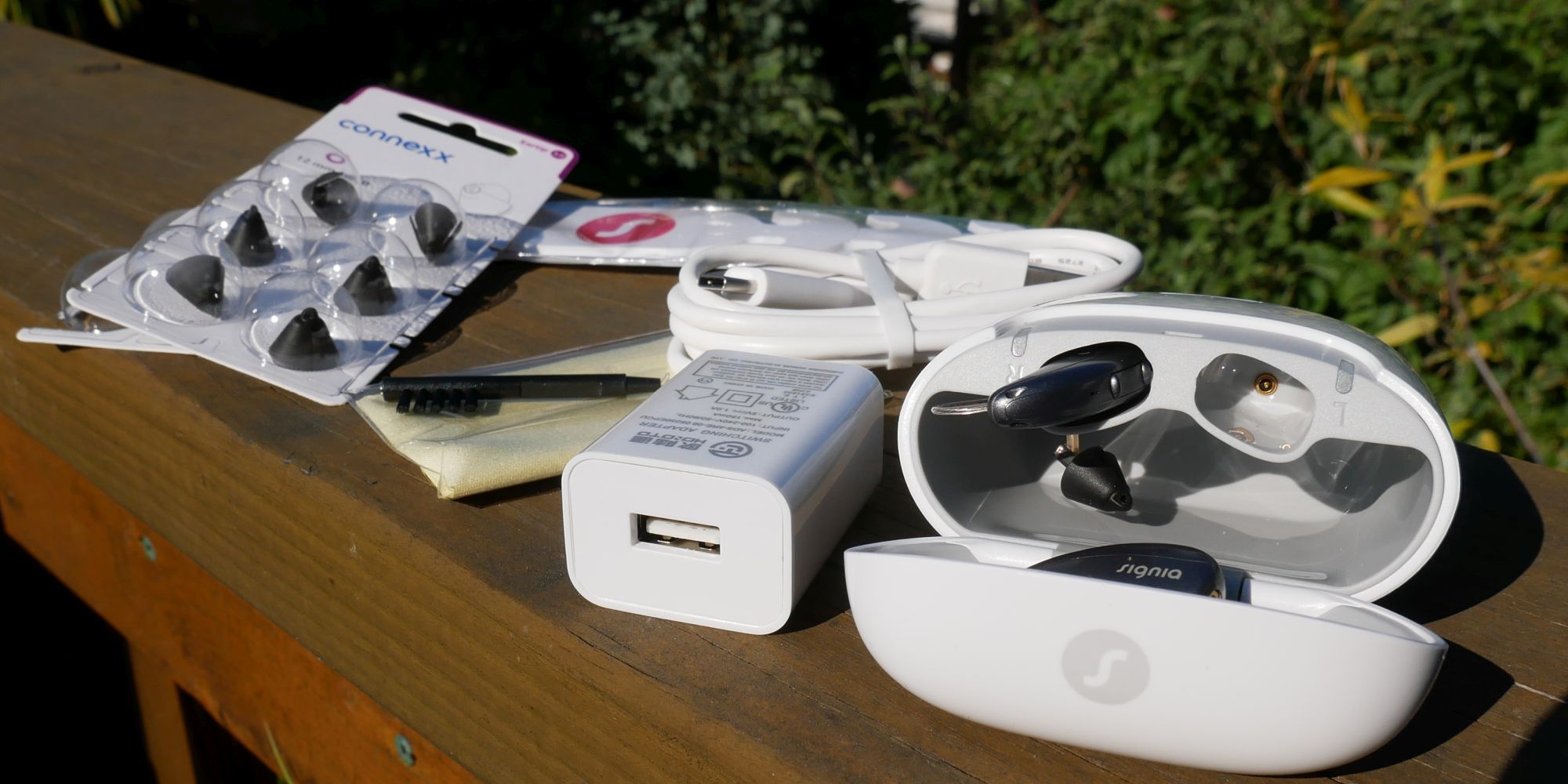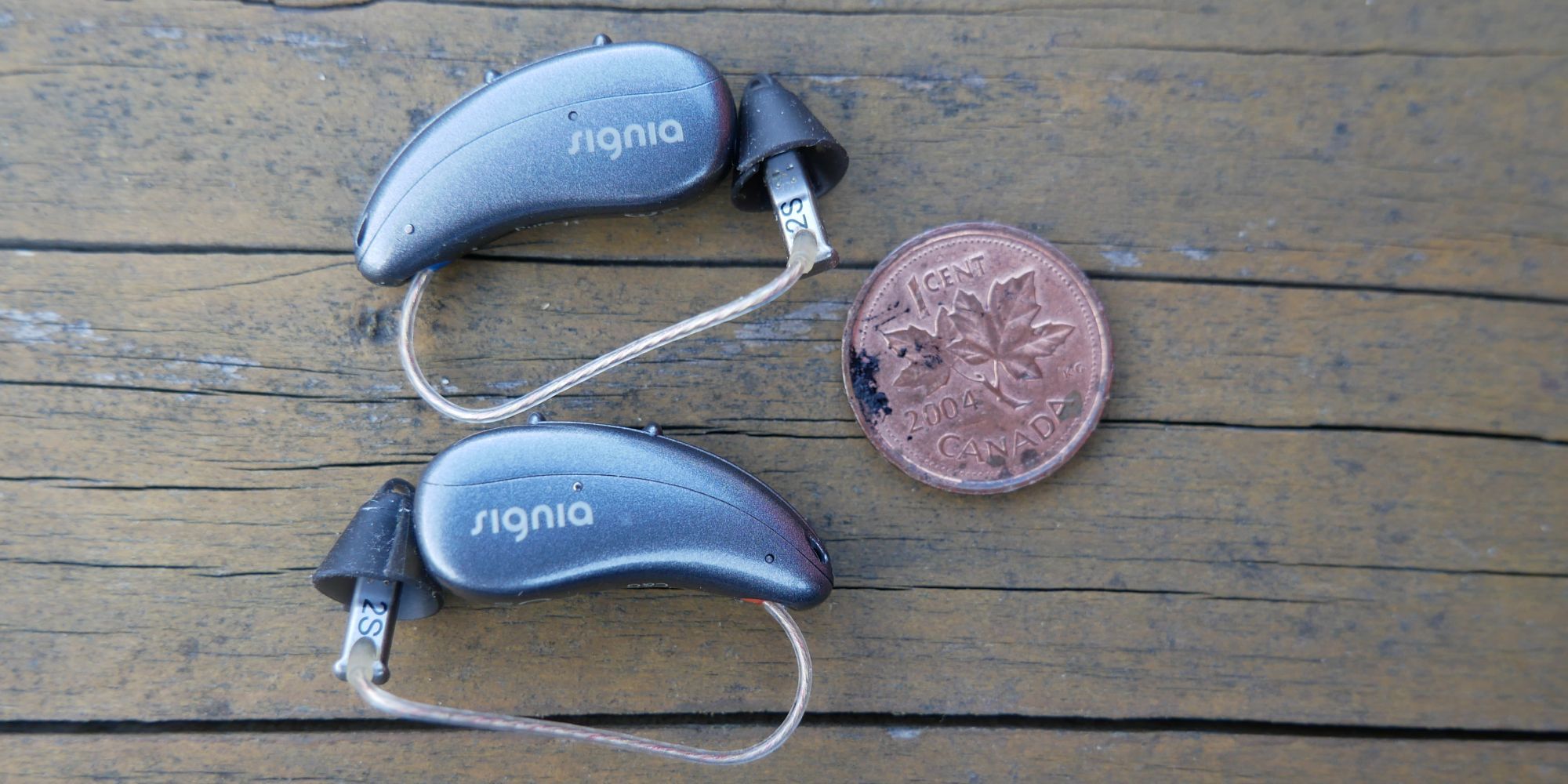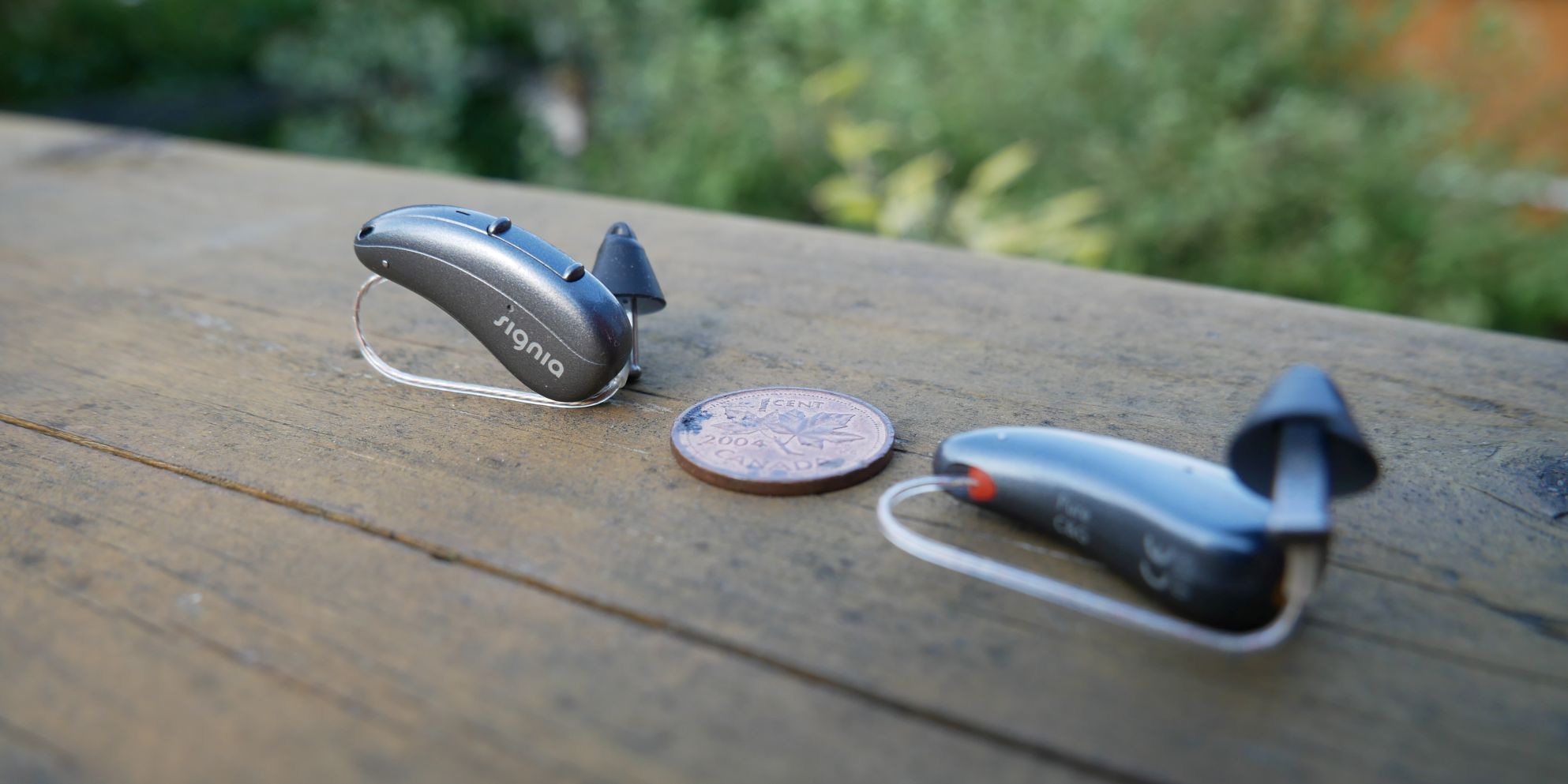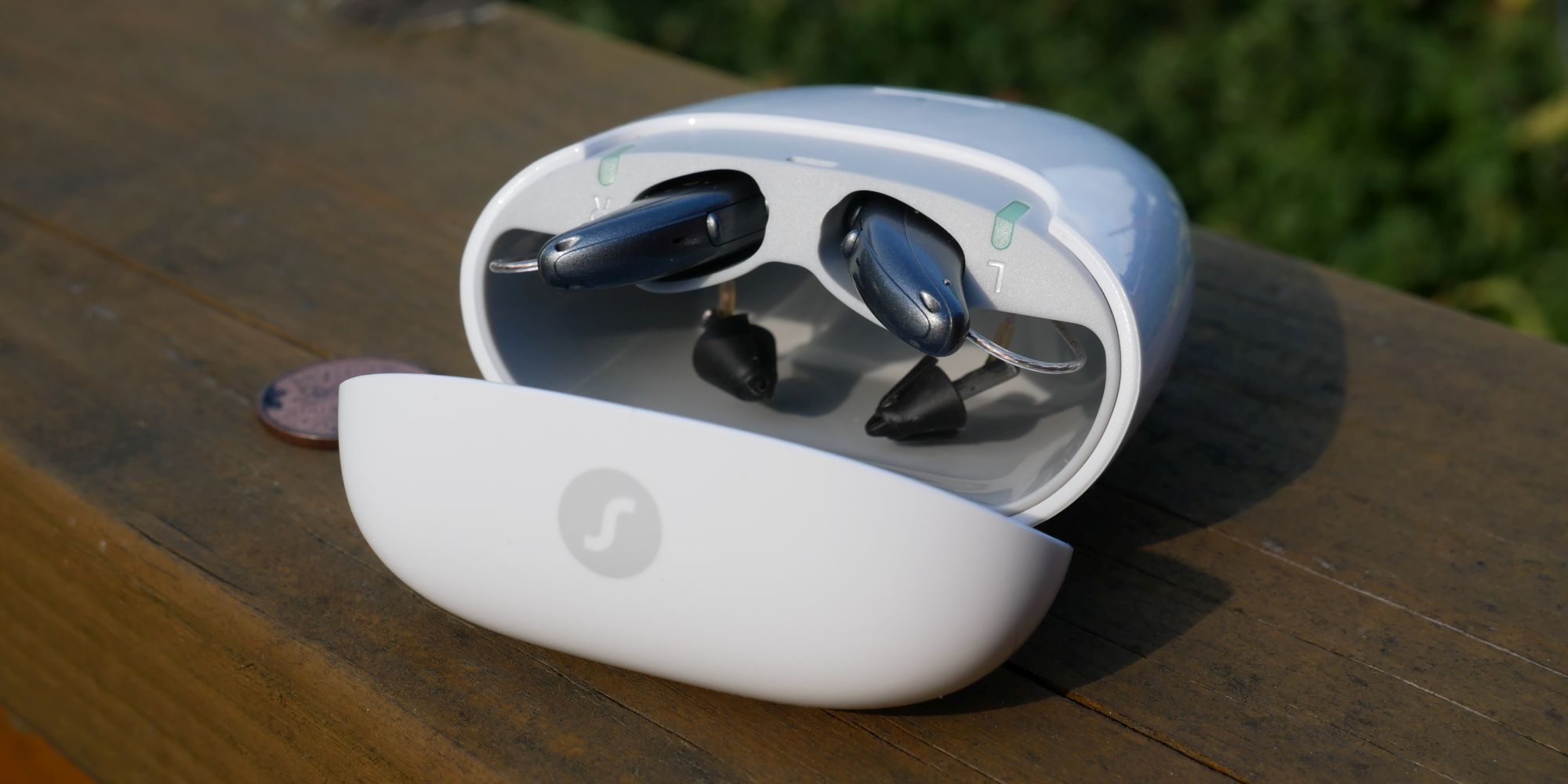Signia Pure Charge&Go AX
The Signia Pure Charge&Go AX are the world's first hearing aids to offer two processors that simultaneously process speech and environmental sounds. Powered by Signia's new Augmented Xperience (AX) platform, they automatically adapt audio processing to your environment, producing a more natural sound. While the battery life exceeded the advertised runtime, there's no way to reliably read the battery charging status. On the upside, Signia offers multiple cleverly designed charging case solutions. Finally, the Signia Pure C&G AX support direct audio streaming to Android and iOS using Bluetooth LE.
- Brand: Signia
- Battery Life: Up to 28 hours
- Presets: Up to six programs
- Connectivity: Bluetooth, ASHA, MFi, coded high-frequency sound
- Volume Adjustment: yes, via rocker swithces, Signia app, or StreamLine Mic
- Noise Cancellation: No
- Additional Tips: Additional eartips available in various sizes and styles
- Direct audio streaming to Android and iOS
- Rechargeable and solid battery life
- Multiple charging case options
- Telecare hearing diary and support in the Signia app
- Optional sound-based app controls
- Optional CROS (single-sided deafness) or Telecoil configuration
- Battery levels in Signia app not accurate
- Behind-the-ear unit can interfere with glasses and face masks
- Signia app assistant requires internet connection
Hearing aids are poor replacements for natural hearing, but they're fast improving.
Building on its previous innovations, Signia just released the world's first hearing aids with simultaneous dual processing. The Signia Pure Charge&Go come with Signia's new Augmented Xperience (AX) hearing aid platform, also available with Telecoil (T AX) or for users with single-sided deafness (CROS).
We took Signia's brand-new hearing aids for a spin and have separated the noise from the facts for you.
What's in the Box
Our Signia Pure Charge&Go came in a white box, packed with manuals and a few accessories. The package included:
- A pair of Signia Pure Charge&Go 7AX hearing aids with S receivers
- Pure Portable Charger
- USB wall charger with USB-C charging cable
- Two packages of Connexx Tulip ear tips 3.0
- Cleaning accessories
- Signia-branded carrying bag
- Signia-branded ear saver (for face masks)
- Several manuals and guides: safety manual for hearing instruments, Pure C&G AX user guide, Pure C&G AX and T AX guide for hearing care professionals, Portable Charger RIC user guide, a Pure C&G AX specs sheet, and an information sheet about the Signia Android/iOS app
The Pure C&G hearing aids come in a few different configurations. As noted above, we received the 7AX model, which is Signia's high-end configuration. The 7AX has a few advanced features compared to the 5AX and 3AX. Most importantly, it's equipped with 48 channels for signal processing, meaning the hearing aids can create more contrast, which produces clearer sound. You can find the full list of features of the Signia AX platform here.
Our model came with S receivers, which reflects our level of hearing loss. S is the weakest receiver (aka speaker), while M, P, and HP receivers are progressively more powerful. Your audiologist will pick a receiver that best suits your needs.
Instead of the portable charger, you can choose the stationary Pure Charger or the Pure Dry&Clean Charger. The latter cleans the hearing aids using UV-C light, followed by a drying step, all while charging. Only the portable version comes with an internal power bank, which can power your hearing aids through three full recharges.
Before we explore what makes these new hearing aids stand out, let's revisit the challenges this technology faces.
Why Can't Hearing Aids Restore Natural Hearing?
With hearing loss, you can't just increase the volume to hear better. You have to appreciate that your brain is doing an incredible job with processing environmental stimuli. Each and every second, your brain is bombarded with 11 billion environmental bits of data that it needs to process. Your ears alone account for about 100,000 bits per second. To process sound, the brain filters out background noises and helps you focus on speech or other important sounds.
When you lose part of your hearing, typically high frequencies, the neurons in your brain that process the audio signals usually still exist. The signal gets lost along the way, most commonly in the cochlea.
The problem with hearing aids is that they compress and amplify external sounds, which may restore sensitivity, but doesn't yield the same selective sound processing found with natural hearing. In other words, your brain receives distorted sound patterns (aka neural code) from your ear that are harder to decode.
This distortion effect is so bad that when you pass speech through a hearing aid, it becomes harder to understand, even for people with perfectly normal hearing.
Modern hearing aids use artificial intelligence, machine learning, or neural networks to improve sound processing. While it remains impossible for hearing aids to fully close the gap to natural hearing (or even come remotely close), these technologies are solving some of the biggest issues that isolate people with hearing loss, including directional hearing, background noise, and speech recognition.
What Is Signia's Augmented Xperience (AX)?
Current hearing aids can directionally capture sound and process it to separate speech from environmental noise. The algorithms work on a single audio stream to enhance speech, suppress environmental noise, and thus create a contrast between the two that makes it easier to understand speech.
According to Signia, however, simultaneously processing speech and surrounding sounds on a single audio stream is a compromise that creates a sub-par hearing experience.
Split Processing Technology With Dual Processors
Signia's solution is to use two processors. Each processor focuses on a separate set of frequencies. With Signia's Augmented Focus technology, the focus area (speech) and surrounding sounds are processed separately.
The focus area processor increases the clarity and brings the sound closer. The second processor decreases background noise while keeping it audible and recognizable. By increasing the number of audio channels available for processing, the algorithms can create more contrast, which equals a clearer and more natural sound. When the processed sounds are recombined, listeners will find it easier to follow conversations in noisy environments.
Own Voice Processing
In addition to Augmented Focus, Signia's Augmented Xperience platform also includes a technology called Own Voice Processing (OVP). During your hearing aid fitting, your audiologist will adjust your hearing aids to pick up your own voice and reduce its amplification, so it will sound more natural to you.
Acoustic Motion Sensoring
Once you're ready to go, your hearing aids will pick up on your movements and adjust audio processing so that you always get the clearest sound possible. Depending on your environment and focus, sounds will shift into the foreground or background to create an immersive hearing experience.
How Good Are the Signia Pure Charge&Go AX?
We tested the Signia Pure Charge&Go in various everyday settings, including outdoors, in bars and restaurants, watching TV, with headphones on, and listening to music. Here's how that went.
Comfort
The Pure C&G AX are Signia's smallest rechargeable receiver-in-canal (RIC) hearing aids, yet. The main unit sits behind the ear, while the receiver (aka speaker) sits in the ear canal. It's not our favorite form factor, and it can be challenging to handle when you have issues with dexterity. On the upside, it lets you wear ear tips that don't completely plug up your ears, which can be beneficial for people with mild hearing loss.
The key to a good fit is the right ear tips. Our review sample came with tulip-shaped ear tips in two different sizes. We had to switch to the smaller size for a more comfortable fit but found that the receiver was slipping out as we walked, talked, or chewed in both cases. In our experience, the open-style dome ear tip provides a better fit, but this may be a question of finding the right size.
If you're looking for an alternative to RIC-type hearing aids, check out the Signia Active Pro. They're great for active people with mild hearing loss.
Sound
What blew us away was a complete lack of sound artifacts. With other RIC hearings aids we tested, we had to adjust the hearing aids to eliminate artifacts from wind or other environmental noises. The Signia Pure Charge&Go just worked.
We're not going to claim that the world sounded amazing again. Our good ear tells us otherwise. But the amplification and clean processing meant that everything sounded more balanced and natural.
In addition to the new Augmented Xperience hearing platform, the Pure C&G AX hearing aids feature another key improvement: direct audio streaming to Android (via ASHA, available on Android 10 and up) and iOS (via MFi). Unfortunately, we were not able to test this feature.
Signia App
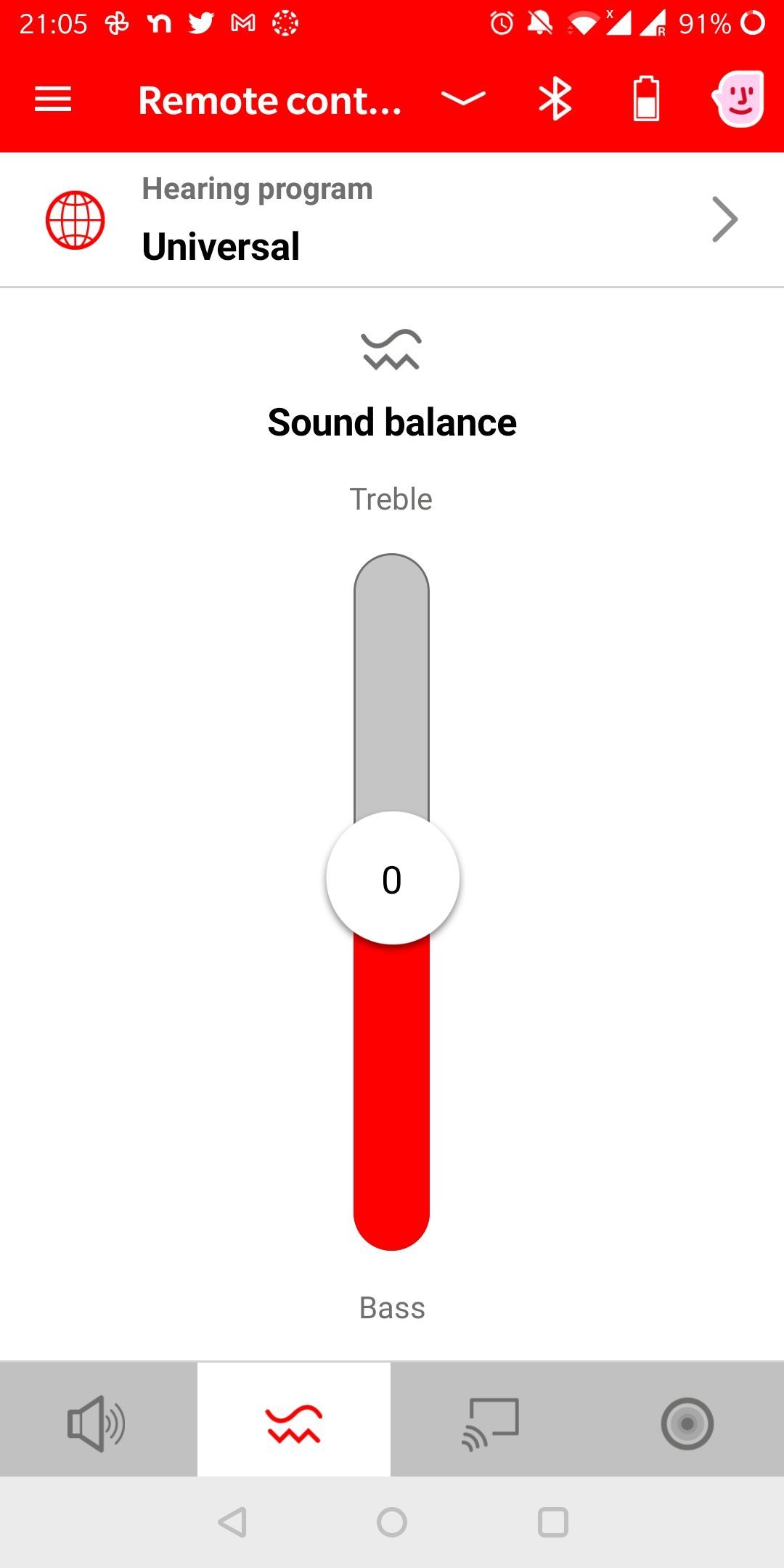
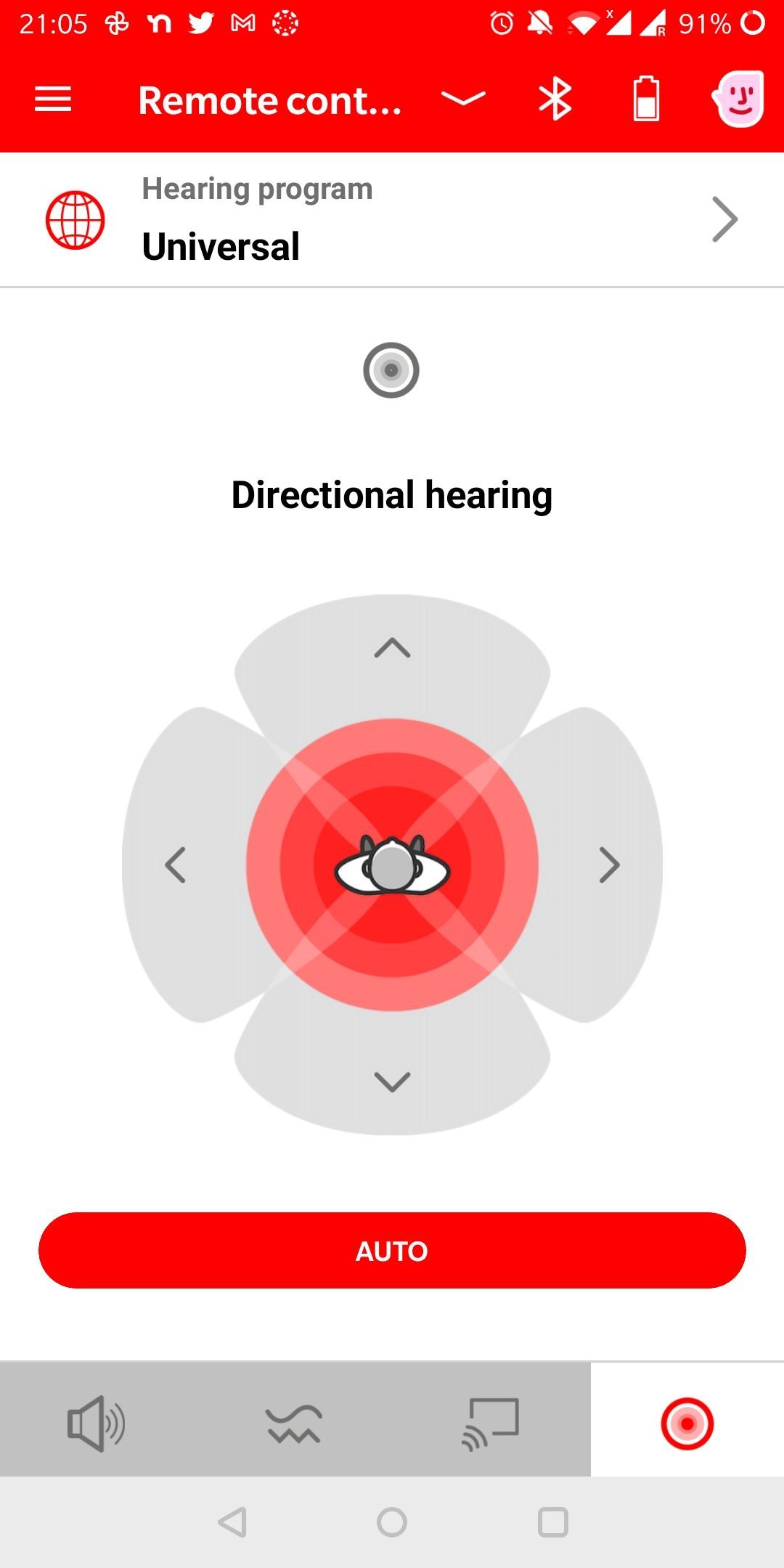
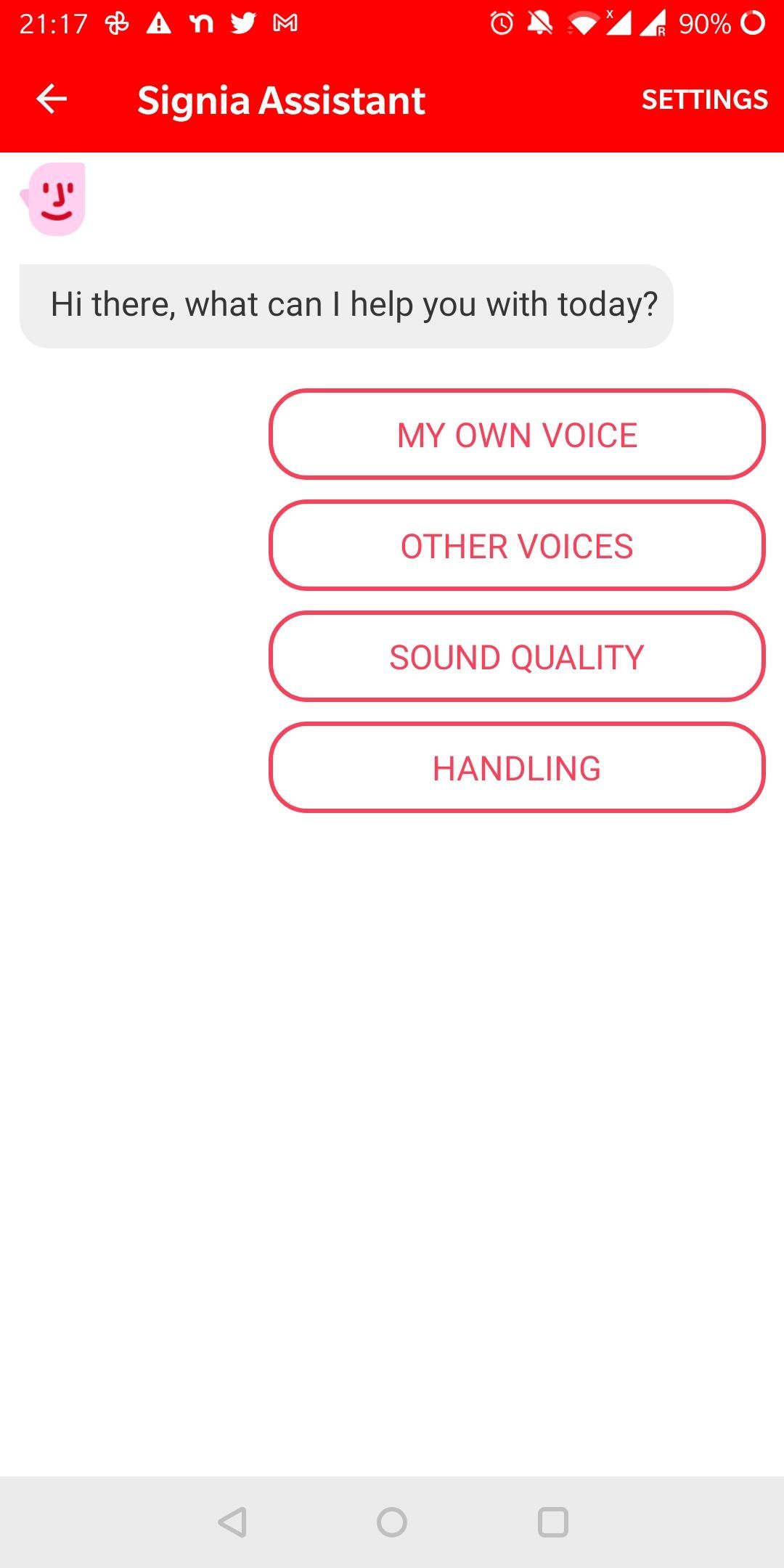
While you can control the Signia Pure Charge&Go AX hearing aids using the rocker switches on the main unit, the app lets you fine-tune a few settings and provides access to additional features.
For example, you can switch between programs, change the volume, or turn them on or off. But you can't control the sound balance, switch into mask mode, or adjust the directional hearing.
In the Signia app, you also have access to the following features:
- Signia Assistant: an AI that helps you improve the sound of your hearing aids with simple questionnaires
- Hearing Lessons: guided exercises to experience everything your hearing aids have to offer.
- Professional/Telecare: a direct chat connection with your hearing aid professional.
- Satisfaction: a hearing aid journal that lets you record feedback you want to discuss with your telecare provider.
- Settings: customize low battery intervals, power-on-delays, and Bluetooth mode.
Battery Life
The battery life of the Pure Charge&Go AX is 28 hours without streaming or 24 hours with five hours of streaming. The T AX model can achieve up to 36 hours with five hours of streaming.
To test the non-streaming battery life, we fully charged the Pure C&G AX hearing aids, turned them on in the afternoon, and let them run throughout the night. When we checked after around 14 hours, the Signia app claimed the battery life was down to 10%. The battery was stuck at 10% for the rest of the day.
After around 26.5 hours, we started hearing a short melody representing a low battery warning. It played every 20 minutes for almost two hours. After that, it played every three minutes, until the hearing aids shut down after almost 29 hours of total runtime.
Charging
Signia switched from inductive to galvanic charging, which increases the overall lifetime of rechargeable Lithium-ion batteries, and it's also faster.
The downside of galvanic charging is that the charging points have to line up perfectly. Hearing aid-shaped charging slots guide the hearing aids into the right position and magnets hold them there.
Placing the hearing aids in the charger switches them off. When you take them out, they automatically switch on. Keep this in mind when you remove your hearing aids from the charger. To manually turn your Signia hearing aids off, press the rocker switch for three seconds.
A full charge takes around four hours. All of Signia's chargers offer 30 minutes of quick charging, which gives you around six hours of battery life.
Our Signia Pure Charge&Go AX Verdict
We loved the Signia Pure Charge&Go AX's natural sound. During our tests, we encountered no audio artifacts. These state-of-the-art hearing aids required minimal input to produce a pleasing soundscape. We were impressed with the automatic sound processing, which balanced out our hearing and gave us a more immersive experienced.
We had a hard time making the traditional receiver-in-canal (RIC) form factor work with glasses, a face mask, and a hat, but appreciated the compact size and ultralight weight. None of the included tulip ear tips provided a great fit during daily activities. You might have to try out different ear tip designs and sizes to find the best fit for your ear.
While the battery life exceeded the 28 hours promised on the included specs sheet, it's nowhere near the top runtimes achieved by competitors, like the Widex MOMENT (40 hours). Moreover, the Signia app reported 10% battery life after less than half the runtime was up. Not only was this clearly wrong, but it also means there's no reliable way to get an accurate battery status reading.
The Signia Pure C&G AX feature Bluetooth LE and support direct audio streaming to Android (via ASHA) and iOS (via MFi).
Overall, we highly recommend giving these hearing aids a spin. The price will be comparable to similar products on the market, though it depends on which additional services your hearing aid professional will offer. Generally, you can expect to pay anywhere from $2,000 to $4,000 for a pair of hearing aids.

